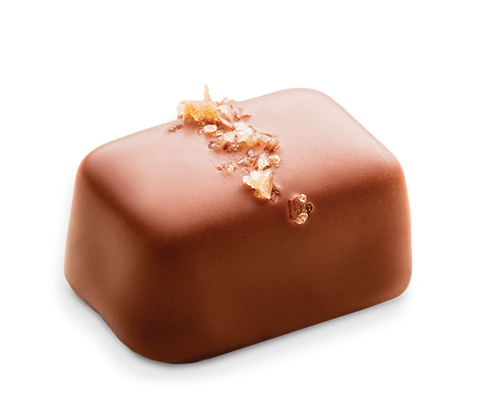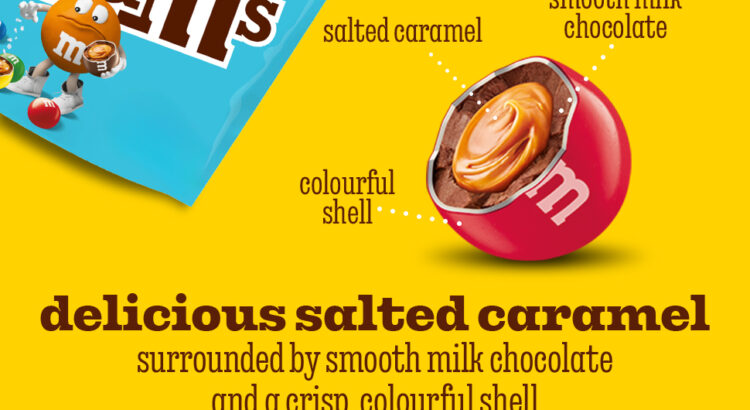Salted Caramel seemed to appear almost out of nowhere, on any corner and is quickly taking over. In Holland it made its mark in the famous Tony Chocolonely chocolate and has since then been found in popcorn, ice cream, coffee, cocktails, protein shakes, Twixbars and the list goes on. The two ingredients alone are surely not unfamiliar; salt has long been a flavor enhancer while caramel the melted, buttery metamorphosis made of sugar. But it wasn’t as accessible or self-evident to have this exact combination of ingredients in pastries, as this elite culinary trend has only gained popularity in the mass market over the last few decades. However, its roots have a longer history. The questions remaining are: How did this fusion of precisely these two contrasting flavors come about? Where did this flavor originate? And why is it all the sudden booming? This article examines the process of popularizing salted caramel and establishing it as a mainstream flavor.
The French local success
To answer these questions, we need to go to the world of gourmet pastries, namely France. The story of salted caramel began with chocolatier and pastry chef Henri Le Roux in 1977 in Bretagne (Brittany). It is said that he (may or may not have) accidentally added some French sea salt into the caramel he was making. Instead of throwing it away, he tasted it and was pleasantly surprised at this confectionery. Le Roux named it “caramels au beurre salé”, which translates to ‘caramel with buttery salt’. This creation became a local success.

There are speculations about whether this confection was made intentionally, but given Brittany is known for combining salt with butter, another story goes that he was drawing inspiration from the region’s local traditional dairy products. Furthermore, France already has a longstanding tradition of combining the contrasting flavors sweet and salty. For example, Foie Gras with sweet chutney or brie with figs. Much like the colors within Impressionist paintings (also a French tradition), Le Roux ‘discovered’ that these flavors can be complementary as well. In salted caramel, the sweetness of the buttery caramel is enhanced by the sharpness of the salt, and vice versa, resulting in a pleasant sensory experience.

Salted caramel on the international stage, and its Americanization
This successful confection did not remain within the region of Brittany but soon took flight. In the 1990s and early 2000s salted caramel began to gain international recognition. Another renowned French pastry chef named Pierre Hermé began incorporating salted caramel in his pastry dishes, particularly his famous salted caramel macrons. Hermé’s impact played an important role in helping salted caramel gain traction among the culinary world and foodies. Soon after, the flavor started spreading across the pastry domain the United States. But despite salted caramel being already an enough as it is explosion of calories, in the U.S. chefs decided to take it a step further. By the end of 2010s chocolate had also become a main ingredient in many of American pastry shops. At this moment this elite culinary trend slowly but steadily seeped into the mass market.

Taking over (snacking) business
While the flavor may be old news to the French, there was another moment when salted caramel solidified its international ascent. In 2010, then-President Barack Obama declared Fran’s Smoked Salt Caramels from Seattle as his favorite chocolate. And naturally Obama’s new favorite sweet became global news. Such pastry products like Fran’s can be considered as one of America’s adaptation of the French salted caramel. Against the background, manufacturers like Häagen-Dasz further popularized, commercialized and democratized this flavor when they introduced it as their new flavor in 2008. Salted caramel started appearing in magazine’s, larger chain restaurants, café’s etc. Companies like Starbucks, Taco Bell all had incorporated this confection into their menu’s. Eventually in 2013 the Dutch chocolate company Tony Chocolonely’s started selling the salted caramel chocolate bar, and surely it became an instant hit. As of this moment, salted caramel outsells regular caramel.

Trending or not
While the original allure of salted caramel stemmed from its combination of sweet and salty, its widespread commercialization has washed away some of that initial charm. Consumers now encounter salted caramel in a gross array of products, from chocolate bars to coffee and beyond, which can lead to flavor fatigue. However, this phenomenon also highlights the power of consumer trends and the desire for new sensory experiences. The flavor’s success has demonstrated how culinary traditions can transcend their origins and adapt to global tastes, thereby showing that food is also pleasure, discovery and fashion. It will be intriguing to see whether salted caramel can maintain its appeal or if the market will (inevitably) seek the next big trend. Ultimately, the journey of salted caramel reflects broader themes in (food) culture: culinary innovation, the effects of globalization and the mass market in the culinary world, and of course the endless quest for delight. Thus reminding us and the food manufacturers that just two ingredients combined can capture the taste buds and minds of the next big consumers.
Written by Michelle Gilhuys
